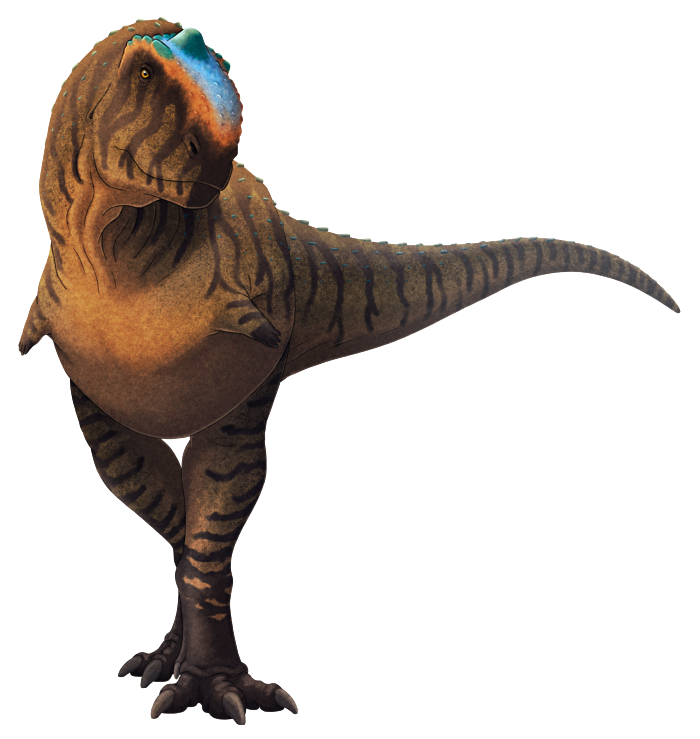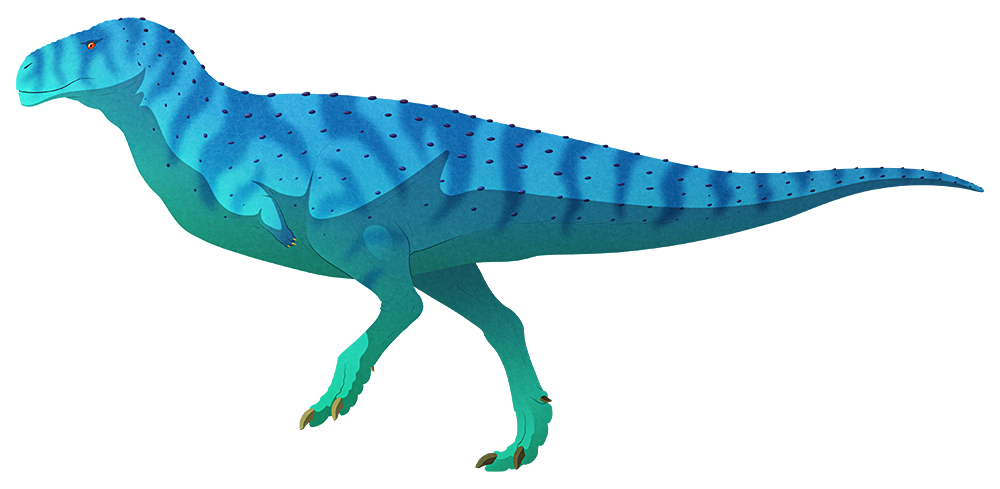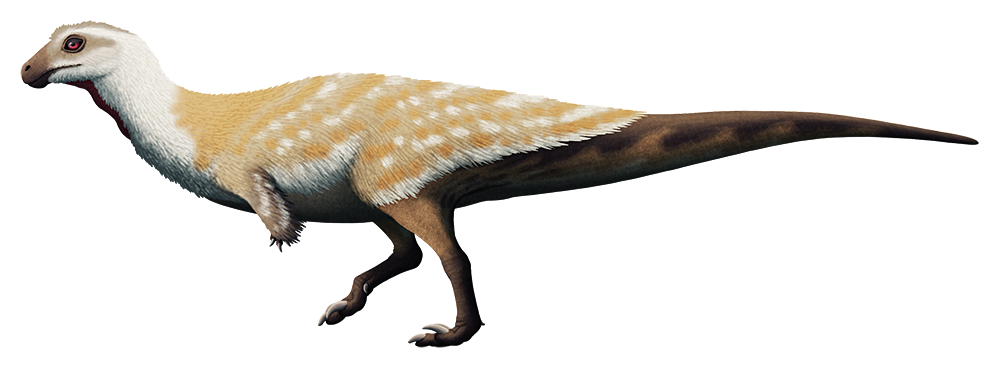Abelisaurids were a group of theropod dinosaurs characterized by short snouts, bony ornamentation on their skulls, tiny stiff arms, and stocky legs. Known mostly from the southern continents of Gondwana, they were the dominant predators in these regions and are thought to have been specialized hunters of titanosaurian sauropods.
Rajasaurus narmadensis lived in what is now western India during the Late Cretaceous, about 67 million years ago. Around 7m long (23′), it had very rough-textured thickened bone on the top of its snout, along with a short rounded horn on its forehead that was probably used for display or headbutting behaviors.
India at this time was an isolated island continent located off the east coast of Africa, and Rajasaurus‘ ancestors probably island-hopped across from then-nearby Madagascar – where its closest known relative lived, the very similar-looking Majungasaurus.



